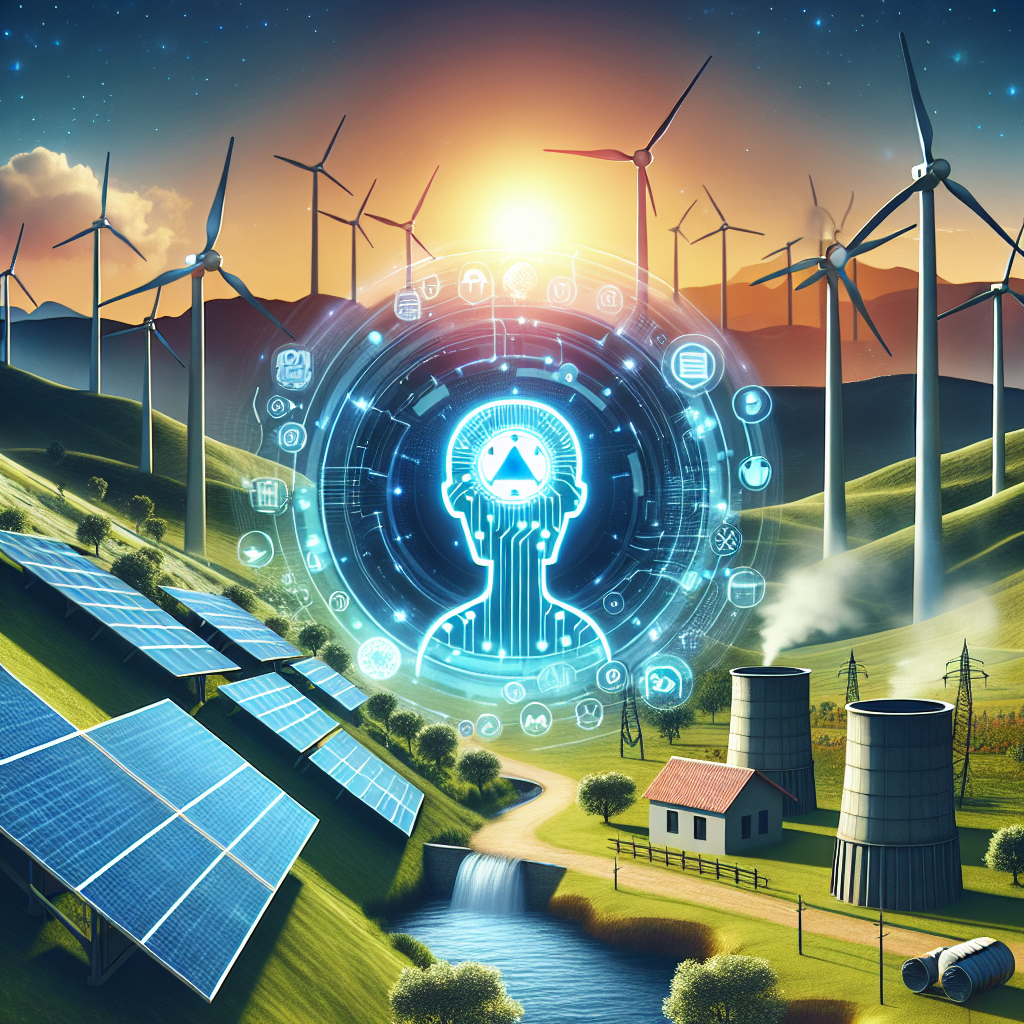Artificial Intelligence (AI) is revolutionizing the way we approach energy access in remote areas with renewables. By leveraging the power of AI, we can optimize energy systems, improve efficiency, and increase access to clean and sustainable energy sources. In this article, we will explore the various AI applications that are being used to enhance energy access in remote areas with renewables, and how these technologies are transforming the way we think about energy production and distribution.
AI Applications for Enhancing Energy Access in Remote Areas
1. Predictive Maintenance: One of the key challenges in remote energy systems is the lack of access to maintenance and repair services. AI can be used to predict when equipment is likely to fail, allowing for proactive maintenance and minimizing downtime. By analyzing data from sensors and monitoring systems, AI algorithms can detect patterns and anomalies that indicate potential issues with equipment, allowing for timely intervention and preventing costly breakdowns.
2. Energy Management: AI can optimize energy production and distribution in remote areas by dynamically adjusting energy generation and consumption based on demand and available resources. By using machine learning algorithms to analyze historical data and real-time information, AI can predict energy demand patterns and adjust energy production accordingly. This can help reduce energy wastage and ensure a more reliable and efficient energy supply in remote areas.
3. Microgrid Optimization: In remote areas where access to the main grid is limited, microgrids are often used to provide energy to local communities. AI can optimize the operation of microgrids by balancing energy generation from renewable sources such as solar and wind with energy storage and demand. By using AI algorithms to forecast energy generation and consumption, microgrids can operate more efficiently and reliably, providing a stable and sustainable energy supply to remote communities.
4. Remote Monitoring and Control: AI-enabled sensors and monitoring systems can provide real-time data on energy production, consumption, and grid performance in remote areas. This data can be used to identify inefficiencies, optimize energy systems, and detect potential issues before they escalate. By using AI to analyze and interpret this data, operators can make informed decisions to improve energy access in remote areas and ensure the reliability of energy systems.
5. Energy Trading and Peer-to-Peer Networks: AI can facilitate energy trading and peer-to-peer networks in remote areas, allowing local communities to buy, sell, and share energy with each other. By using blockchain technology and smart contracts, AI can enable secure and transparent transactions between energy producers and consumers, promoting a more decentralized and resilient energy system in remote areas. This can help reduce energy costs, increase energy access, and empower communities to take control of their energy supply.
FAQs:
Q: How can AI help improve energy access in remote areas with renewables?
A: AI can optimize energy systems, predict maintenance issues, manage energy demand, and enable energy trading in remote areas with renewables. By using AI algorithms to analyze data and make informed decisions, energy systems can operate more efficiently, reliably, and sustainably, increasing energy access in remote areas.
Q: What are some examples of AI applications for enhancing energy access in remote areas?
A: Some examples of AI applications include predictive maintenance for renewable energy systems, energy management for optimizing energy production and distribution, microgrid optimization for balancing energy generation and consumption, remote monitoring and control for real-time data analysis, and energy trading and peer-to-peer networks for decentralized energy systems.
Q: How can AI benefit remote communities in terms of energy access?
A: AI can benefit remote communities by providing a more reliable and sustainable energy supply, reducing energy costs, empowering communities to take control of their energy production and consumption, and promoting a more decentralized and resilient energy system. By leveraging the power of AI, remote communities can improve their energy access and quality of life.
In conclusion, AI applications are playing a crucial role in enhancing energy access in remote areas with renewables. By leveraging the power of AI to optimize energy systems, predict maintenance issues, manage energy demand, and enable energy trading, we can create a more sustainable and reliable energy supply for remote communities. As we continue to innovate and develop new AI technologies, we can look forward to a future where clean and renewable energy is accessible to all, regardless of location.

